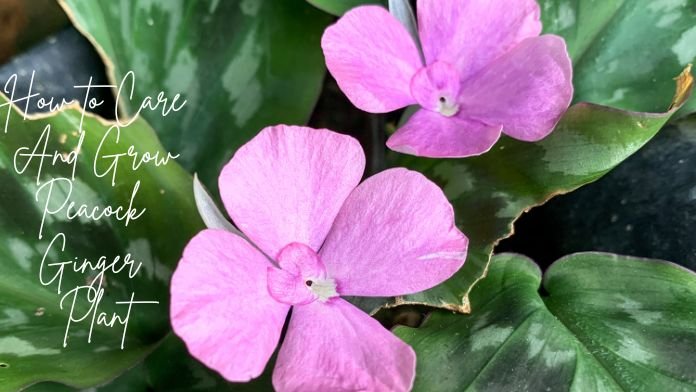
The Desert Rose plant, known scientifically as Adenium obesum, is a stunning, low-maintenance succulent that can add a touch of exotic beauty to your garden or indoor plant collection.
With its striking flowers and unique, bonsai-like appearance, the Desert Rose is a favourite among plant enthusiasts.
However, to ensure this plant thrives, it’s essential to understand its specific care requirements.
This guide will delve into everything you need to know about caring for a Desert Rose plant, from planting and watering to fertilizing and pruning.
About Desert Rose Plant
Desert Rose is native to the arid regions of Africa and the Arabian Peninsula, so it has evolved to withstand hot, dry conditions.
Its thick, succulent stems store water and its vibrant flowers bloom in various colours, including pink, red, and white.
Desert Rose Plant Care
Desert roses thrive in bright, indirect sun. Water deeply, then let dry completely. Use cactus mix and fertilize sparingly. Warmth (65-85°F) is ideal. Prune for shape and control pests with neem oil. Enjoy vibrant blooms!
Light
- Emphasize the desert rose’s need for bright, indirect sunlight for at least 6-8 hours daily.
- Discuss potential issues with insufficient light (etiolation) and suggest solutions like using grow lights.
- Briefly mention how too much direct sunlight can scorch leaves.
Watering
- Highlight the importance of proper watering to avoid root rot.
- Explain the “soak and dry” method: water deeply until water runs out of drainage holes, then allow the soil to dry completely before watering again.
- Mention factors influencing watering frequency (season, pot size, plant maturity).
- Briefly advise against using softened or chlorinated water.
Soil
- A well-draining cactus or succulent mix is recommended for optimal aeration and drainage.
- Discuss creating your potting mix using ingredients like perlite, sand, and potting soil.
Fertilizer
- Explain that desert roses don’t require frequent fertilization, especially during dormancy.
- Following the product’s instructions, suggest using a balanced fertilizer diluted to half strength during the active growing season (spring and summer).
Temperature and Humidity
- Mention the desert rose’s preference for warm temperatures (ideally 65-85°F).
- Briefly discuss how it can tolerate cooler temperatures but might go dormant.
- Advise against keeping it in drafty areas or exposing it to sudden temperature fluctuations.
- Acknowledge that desert roses don’t require high humidity but can benefit from occasional misting, especially during dry spells.
Potting and Repotting
Desert roses love well-draining pots! Choose a pot slightly more significant than the root ball. Repot every 2-3 years or when root-bound. Gently remove the plant, loosen the roots, and plant in fresh cactus mix. Avoid overwatering after repotting.
- Recommend using a pot with drainage holes slightly larger than the root ball.
- Explain when to report (every 2-3 years or when the plant outgrows its pot).
- Provide a step-by-step guide on repotting, including choosing the right pot size, carefully removing the plant from the old pot, loosening root-bound roots, and planting in fresh potting mix.
Pruning and Shaping
Snip spent blooms and prune for shape! Use sharp shears for clean cuts just above a node. Pinch leggy growth to encourage branching. Prune during active growth for bushier plants. Enjoy a full, blooming desert rose!
- Pruning Benefits: Regular pruning helps maintain the shape of the Desert Rose and encourages new growth and flowering.
- Pruning Technique: Use clean, sharp scissors or pruning shears to remove dead or damaged branches. Prune in late winter or early spring before new growth starts.
Propagation Methods
Desert roses multiply with stem cuttings! Take healthy, 6-inch stems with leaves. Let the cut end callus over for a day. Plant in a well-draining mix, keeping it moist but not soggy. Roots develop in 2-6 weeks!
- Seed Propagation: Growing Desert Roses from seeds is possible but slow. Sow seeds in a well-draining mix and keep them warm and moist until they germinate.
- Cuttings: Propagating from cuttings is faster and more reliable. Take a healthy cutting, let it dry for a few days to form a callus, and plant it in a well-draining soil mix.
Common Pests and Problems
Mealybugs, scale, and aphids love desert roses! Neem oil spray is your friend. Watch for yellowing leaves, a sign of underwatering, overwatering, or nutrient issues. Fungal infections? Repot with fresh soil and adjust watering.
- Past Issues: Watch out for spider mites, aphids, and mealybugs. Treat infestations with insecticidal soap or neem oil.
- Disease Concerns: Root is the most common issue caused by overwatering. Ensure proper drainage and avoid waterlogging the soil.
Seasonal Care Tips
Desert roses love warmth! Pamper them with bright light and regular watering in spring and summer. As temperatures dip, ease off watering and provide some rest during their cool-season slumber.
- Spring and Summer: This is the active growing season for Desert Roses. Ensure they receive adequate sunlight, water, and nutrients.
- Fall and Winter: Reduce watering and stop fertilizing during the dormant period. If grown outdoors, bring the plant indoors to protect it from frost.
Conclusion
Caring for a Desert Rose plant requires understanding its unique needs and a commitment to providing the right environment. With the right light, soil, watering, and seasonal care, your Desert Rose can thrive and bring beauty to your home or garden. Remember to monitor for pests and diseases, and enjoy watching this stunning plant flourish.
FAQ
How Often Should I Water my Desert Rose?
Water your Desert Rose profoundly but infrequently. Allow the soil to dry out completely between waterings to prevent root rot.
Can I grow a Desert Rose Indoors?
Yes, you can grow a Desert Rose indoors. Ensure it receives plenty of direct sunlight, preferably from a south-facing window.
Why are The Leaves on my Desert Rose Turning Yellow?
Yellow leaves can indicate overwatering, inadequate light, or nutrient deficiency. Check your watering habits and ensure the plant receives enough light and nutrients.
How Do I Propagate a Desert Rose?
You can propagate a Desert Rose from seeds or cuttings. Propagating from cuttings is faster and more reliable. Allow the cutting to form a callus before planting it in well-draining soil.
What Type of Soil is Best for a Desert Rose?
Use a well-draining soil mix, such as a cactus or succulent mix. You can also create your mix by combining regular potting soil with sand or perlite.
When Should I Prune my Desert Rose?
Prune your Desert Rose in late winter or early spring before new growth starts. This helps maintain its shape and encourages new growth and flowering.
RELATED POSTS
View all


